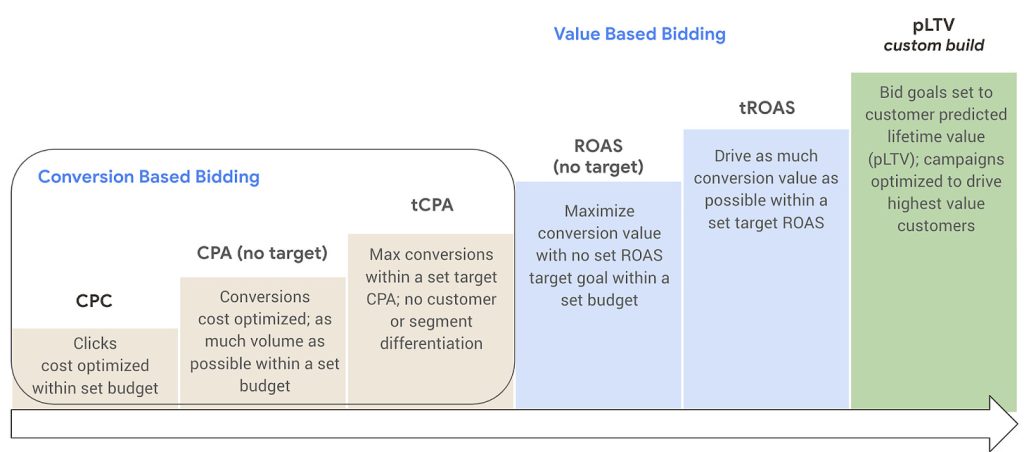
How to Acquire “Monthly” Donors from the Get-Go
I think of donor types in terms of the following “ladder of ascension”:
- Emergency, irregular, “random” donors – those donating at no predictable pattern
- Micro-moments, irregular donors – those sharing some of our goals but they’re hard to predict
- Micro-moments, regular donors – those aligned with the mission but not yet ready to make an ongoing commitment yet
- Micro-moments, monthly donors – those committed to support regularly and make additional donations from time to time (end of year, emergencies)
- Legacy donors
Demographic groups can move through these levels sequentially:

The above is simplified but gives you an idea of what I mean.
So, a straightforward answer to how to obtain monthly donors is to focus your advertising on current donors and move them level by level “up” in their support.
This is a necessary but not sufficient play if the goal is to build a powerhouse fundraising program and who doesn’t want that?
To do more and acquire monthly donors from the get-go, these are my 3 considerations:
Who do I target? ~ Donor Obsession
How do I bid? ~ Value-Based Bidding
What do I tell them? ~ Seamless Conversion
Donor Obsession is about targeting the right people from the beginning. In earlier editions of SPN, I’ve shared how to use Google Analytics for segmenting your donors based on intent – now is the time to take that one step further.
Most of us are not limited by the size of our addressable audience. Fortunately for non-profits, our addressable audiences are usually close to the entire population of the country within which we reside.
So, instead of focusing your segmentation efforts on just about “any” donor more likely to donate to a given cause, you need to focus your analysis – and marketing spend – only on those willing to donate “monthly” for your “exact” cause.
Similar to the for-profit space – focus on your best customers, not just any customers – to grow faster than the competition. From first-hand experience of pulling the levers myself coupled with the non-profits I work with today, the situation is usually similar:
20% of donors drive 50%+ of total revenue.
And of that 20%, most are your monthly donors.
Here is the “master segmentation table” example I shared in SPN Edition 1:

Adding one more column to the criteria can already change the distribution of segments:

Value-based bidding is using technology to help us be more donor-obsessed. Google Ads has a lot of bidding settings available – below is how I think about progressing through them:

Use Google’s algorithms only in addition to your audience segmentation. You want to retain knowledge and insight. Relying squarely on automated algorithms is risky – it takes away the control and the understanding of what’s working/not working.
When used correctly, though – with your campaigns set up per audience and reporting in place to analyze performance – automated bidding can help find insights you’d miss otherwise.
For example, it was eye-opening to see many of our “Millennial campaigns” targeting the 25-34 age group perform really well under ROAS and LTV models, while not doing well in other settings.
After digging deeper, we discovered that the share of monthly donors is much higher among Millennial donors than in other age groups. My hypothesis is that these donors have been conditioned/don’t know any different to “subscription economy” behavior. They’re used to low-amount, regular commitments.
Seamless Conversion ensures that the messaging – both in your Creative and on the Landing Page/Donation Form – makes it easy for prospective donors to select a monthly option. Below are some successful tactics I deployed. Most worked even better in concert with each other:
- Comparisons – target people currently at Starbucks with creative that explains the value of a $5 monthly donation over a picture of a coffee cup.
- Defaulting donation forms to the monthly tab, while calling out the Monthly element and lowering the average donations to $5-$15 options.
- Adding a pop-up at the end of the donation form for one-time donors to convert to monthly right away.
- Following up via email within 5 minutes of the one-time donation offering to convert to monthly.
- Retarget donors who just gave with “thank you” messaging in Display, a vision statement of what can be solved with their commitment, and a CTA to make it monthly.
Wrapping Up
To effectively acquire monthly donors, it’s crucial to adopt a strategic, focused approach. This involves three key considerations: targeting the right donors (‘Donor Obsession’), using value-based bidding strategies, and ensuring a seamless conversion process.
The goal is to shift the focus from broad donor acquisition to strategically targeting and converting individuals who are most likely to become committed monthly donors. This approach, combined with leveraging technology and optimizing the donation experience, can significantly enhance a nonprofit’s fundraising efficiency and success.